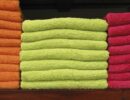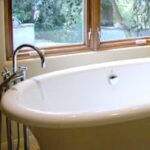Here you’ll find a helpful explanation of how a bathtub works, with common tub types, styles and sizes, with bathtub drain plumbing diagrams
Bathtubs may be either built into a three-wall alcove or freestanding.
Built-in tubs range from familiar tub/shower combinations to ultra-modern, computerized whirlpool tubs that automatically deliver and maintain a given water temperature.
Freestanding tubs come in many styles, too, from classic claw-footed tubs to elegantly sleek, jetted models.
The best bathtubs are made from enameled cast iron. Though they’re incredibly heavy, particularly in large sizes, cast-iron tubs have deep, durable finishes.
Tubs made from fiberglass-reinforced acrylic are also good, and, because they are considerably lighter and more easily molded, they tend to come in larger, more intricate styles than cast-iron types. Some tubs are also made of fiberglass, but these tend to fade in direct sunlight and scratch a little too easily.
The conventional length of a bathtub is 5 feet, but tubs are made up to 7 feet long. A wide range of widths and depths is available.
Bathtubs that include a shower have a diverter valve that switches the flow of water from the tub spout to the shower head. Here is how the setup works.
Bathtub drains have two legs, one to the main drain opening and the other to the overflow drain opening. To close and open the drain, two different assemblies are common: pop-up and plunger-type. Both are operated by a trip lever at the overflow drain.
With a pop-up drain, linkage forces the drain stopper up or down by way of a rocker arm. With the plunger type, a hollow brass plunger slides up and down inside the drain assembly to seal the drain opening. For more about pop-up stoppers, see How a Pop-Up Drain Stopper Works.













 Don Vandervort writes or edits every article at HomeTips. Don has:
Don Vandervort writes or edits every article at HomeTips. Don has:




